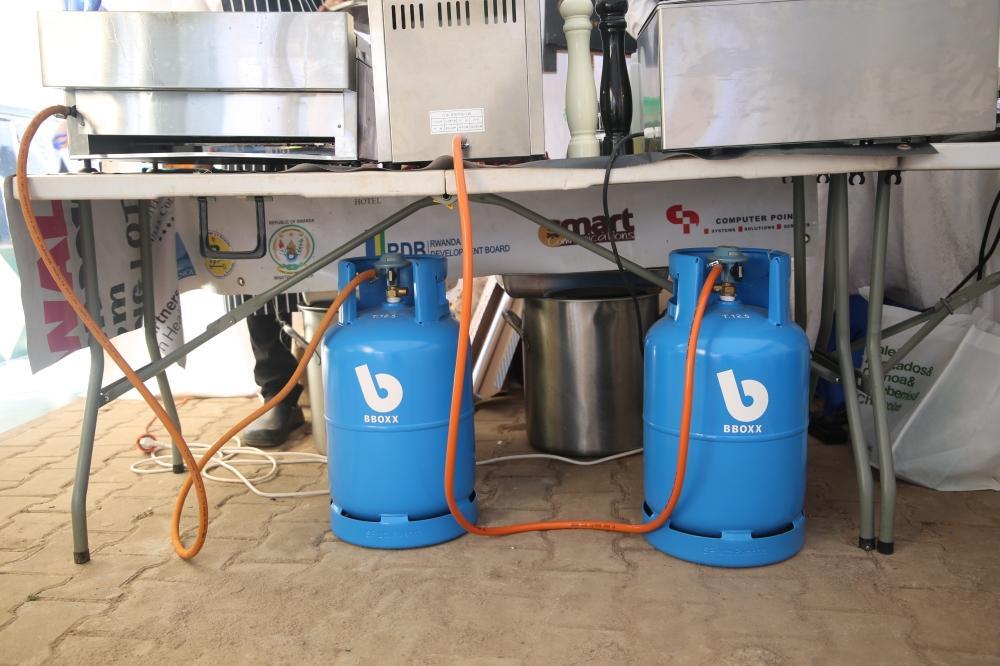Africa-Press – Rwanda. As Rwanda pushes for increased adoption of clean cooking solutions like Liquefied Petroleum Gas (LPG), experts agree that education on its safe use must go hand-in-hand with expansion efforts to protect lives and property.
Rwanda is constructing cooking gas storage facilities in Kabuga, Rusororo Sector, in Gasabo District, with a capacity of 17,000 cubic metres—or 17 million litres— in line with ensuring supply sustainability and price regulation, according to the Development Bank of Rwanda (BRD) and the Ministry of Infrastructure.
Overall, the cooking gas used in Rwanda, so far, is LPG.
Jean-Claude Uwizeye, the Vice-Chairperson of Energy Private Developers (EPD), an association of private energy companies operating in Rwanda, said that Rwanda will need 230 million litres of LPG by 2029. He was making observation on the significance of strategic cooking gas reserves, on June 4, during a Senate committee session, as part of its oversight of government efforts to improve citizens’ access to clean cooking energy.
According to Rwanda Utilities Regulatory Authority (RURA), LPG gases are classified as hazardous materials because of their extremely flammable properties and explosive potential when stored under pressure.
As noted, LPG is flammable mixtures of hydrocarbon gases used as fuel in heating appliances, cooking equipment, and vehicles. In Rwanda, LPG is used mainly in cooking by households, restaurants, hotels, as well as public and private institutions.
The available LPG cylinders’ capacity ranges from three to 50 kilos.
Jean-Bosco Nsengiyumva, the Managing Director of Green Hanga, a company promoting clean cooking solutions, told The New Times that while cooking gas has many benefits, its improper use has led to serious incidents, including fatalities. He underscored the need for cooking gas public safety education and better management practices. “People need to understand what cooking gas is and how it works. They should know how to properly use the regulator, cylinder, hose, and stove,” Nsengiyumva said.
Nsengiyumva highlighted the importance of gas safety mechanisms, such as gas leak detectors. These devices can be fitted to a cylinder to sense leaks and automatically shut off the gas supply, reducing the risk of fire or explosion.
Good cooking gas management also includes proper handling practices.
“After cooking, always ensure the stove and the cylinder valve are turned off,” he advised.
As accidents often occur due to gas leaks or their concentration in a poorly or non-ventilated area, Nsengiyumva said, stressing the importance of cooking in well-ventilated spaces.
“Before turning on the stove, open kitchen windows and wait a few minutes – like five. If any gas is present, it will disperse,” he advised.
“Gas becomes dangerous when it comes into contact with an open flame,” he added.
Flammable items should be kept away from the cooking area to avoid fuelling potential fires. In case of a small fire, Nsengiyumva suggested using a water-soaked heavy cloth, like a blanket, to smother the flames—provided the fire is still manageable.
On the reasons for using LPG, RURA pointed to benefits including it being a clean energy, cooking faster than charcoal and time saving, and being more environmentally friendly than charcoal by reducing greenhouse gases emission by up to 70 per cent.
Despite these benefits, some people may fear using cooking gas because of potential dangers, said Philbert Dusenge, the Coordinator of the Energy Access and Quality Improvement Clean Cooking Project at BRD.
To respond to such concerns, he said that BRD has environmental and social safeguards team that evaluates safety plans before financing any LPG-related business.
“If you are a gas trader, before we give you a loan, you have to show us how you will deal with all issues related to how gas can cause a problem if not used correctly,” he said.
BRD also educates beneficiaries and the public on proper cooking gas usage, emphasizing the need to use LPG in properly ventilated spaces and understanding emergency response steps in case of an incident.
Tips by RURA on cooking gas safety:
Ensure that filled LPG cylinders are transported in upright position.
Cylinders must be stored in upright (vertical) position at all times, in an area that is adequately ventilated, away from sources of heat, whether in use or not.
The cylinder shall be stored in a secure location to protect against falling, tip over or damage.
The hose connecting LPG cylinder and cooker shall be in good condition and not passing through hot medium during cooking.
LPG users must always check to ensure that: the gas cylinder valve and regulator are in good condition and closed properly to the cylinder to avoid LPG leakage; the hose connecting the gas cylinder and cooker are closed properly on regulator and a damaged one is replaced to avoid leakage; and the gas cylinder unified valve is in good condition.
After cooking, it is essential that you check if the cylinder is stored safely (full or empty) away from any source of heat and its valve is well closed.
For More News And Analysis About Rwanda Follow Africa-Press






